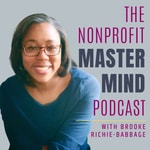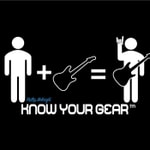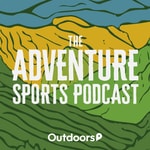Singletracks Mountain Bike Podcast – Détails, épisodes et analyse
Détails du podcast
Informations techniques et générales issues du flux RSS du podcast.

Singletracks Mountain Bike Podcast
Singletracks.com
Fréquence : 1 épisode/8j. Total Éps: 424

Classements récents
Dernières positions dans les classements Apple Podcasts et Spotify.
Apple Podcasts
🇫🇷 France - wilderness
02/08/2025#89🇫🇷 France - wilderness
01/08/2025#72🇫🇷 France - wilderness
31/07/2025#61🇨🇦 Canada - wilderness
30/07/2025#77🇫🇷 France - wilderness
30/07/2025#42🇨🇦 Canada - wilderness
29/07/2025#37🇩🇪 Allemagne - wilderness
28/07/2025#99🇩🇪 Allemagne - wilderness
27/07/2025#80🇨🇦 Canada - wilderness
26/07/2025#87🇩🇪 Allemagne - wilderness
26/07/2025#74
Spotify
Aucun classement récent disponible
Liens partagés entre épisodes et podcasts
Liens présents dans les descriptions d'épisodes et autres podcasts les utilisant également.
See all- https://www.avantlink.com/click.php?tt=cl&
406 partages
- https://www.singletracks.com/
298 partages
- https://www.mtb-tribe.com/
125 partages
- https://www.instagram.com/singletracks
285 partages
- https://www.instagram.com/laelwilcox
23 partages
- https://www.instagram.com/efprocycling
4 partages
Qualité et score du flux RSS
Évaluation technique de la qualité et de la structure du flux RSS.
See allScore global : 22%
Historique des publications
Répartition mensuelle des publications d'épisodes au fil des années.
How hip packs and frame bags are made, with Bullmoose Softgoods
Épisode 394
mardi 20 août 2024 • Durée 42:33
Wes Holland is the owner of Bullmoose Softgoods where he designs and produces one-of-a-kind bags for cycling and adventuring. Bullmoose is based in Summerville, Massachusetts and currently offers handlebar and frame bags plus hip packs and accessories.
- What came first for you: bikes or bags?
- What kind of riding do you like to do? What is the riding scene like in Boston?
- There are a lot of hip packs and handlebar bags out there, so why make your own?
- What types of materials are you working with?
- What's your shop setup like?
- Your hip packs aren't cheap, with prices starting at $130. What makes bags like this so expensive?
- What's the trickiest part about making a bag for biking? How long does it take to make a frame bag, for example?
- Have you had any failures when testing new designs?
- With accessory mounts becoming more common across all types of bikes, does this make fitting or attaching bags easier for you as a bag maker?
- What's in your hip pack?
- Do you have new products or projects on the horizon?
Check out Wes's work at bullmoosesoftgoods.com.
An auto-edited summary of our conversation is available at Singletracks.com.
MTB trail quality is "about to ramp up on the hockey stick"
Épisode 393
mardi 23 juillet 2024 • Durée 01:03:56
Greg Mazu is the self-described "Chief Dreamer" behind Backslope Tools, a company that designs and sells tools for trail building and forest maintenance. He's also the founder of Singletrack Trails, a trail building company that recently finished its last project after 20 years in the business.
- When did you build your first trail?
- How did you get into professional trail building?
- What motivated you to start Tools for Trails, and later Backslope tools?
- Where are Backslope tools manufactured?
- If you could only have one tool to use for building a trail, what would it be?
- Some riders say they prefer natural trails to machine-built ones. Do you have a preference for riding machine- or hand-built trails? Can a machine-built trail be built to feel like a natural or hand-built trail, or vice versa?
- Singletrack trails was involved in some iconic projects over the years in places like 18 Road and Lunch Loops in Fruita, Black Mountain in North Carolina, Palisade Plunge in Colorado, and Handcut Hollow in Bentonville. Which trail building projects are you most proud of?
- What are some favorite trails you weren't involved in building?
- What are some of the challenges the trail building industry is facing in meeting increased demand for trails?
- Have we reached a peak in terms of trail quality, or is there room for further growth and improvement? What are some of the latest, or upcoming innovations riders can look forward to?
See the tools we talked about at backslopetools.com and follow @gregmazu on Instagram.
--Keep up with the latest in mountain biking at Singletracks.com and on Instagram @singletracks
Love It or Hate It, Mountain Bikes Aren't As Lightweight as they Used to Be
Épisode 384
mardi 26 mars 2024 • Durée 46:42
In this episode of the Singletracks podcast, Matt and Jeff discuss the current trends around mountain bike weights. Are bikes too heavy, or are they where they should be given how durable and capable they are today?
This discussion covers:
- Examples of specific bikes and their weights
- Why bike weights might be increasing
- The benefits to lightweight -- and heavy -- mountain bikes
- Areas where mountain bikes might be able to cut weight
This is Matt's last episode with the Singletracks podcast so to start the show we talk about some of his most memorable stories from the past 6 years. We'll miss you Matt!
Where else can you choose from over 300 miles of epic singletrack against a backdrop of soaring mountains and cascading waterfalls? Where else can you explore 100,000 acres of public lands laced with hundreds of miles of backcountry gravel roads? Your best mountain biking adventure ever begins in Brevard, North Carolina, home to Pisgah National Forest and DuPont State Recreational Forest. Four primo bike shops will get you sorted, whether you need a rental, service, or some cool swag. Top it off with an array of craft breweries, cafes, and gathering spots that have earned Brevard the title as one of America’s coolest small towns. It all adds up to one of the premier mountain biking destinations in the U.S. Find out more at ExploreBrevard.com.
--Keep up with the latest in mountain biking at Singletracks.com and on Instagram @singletracks
The 2021 Mid-Travel Mashup: Our Favorite Trail Bikes Tested
Épisode 304
lundi 4 octobre 2021 • Durée 01:02:35
Today we’re wrapping up our mid-travel, trail bike mashup with our bike testers, Chris, Gerow, and Matt. We’ll meet the testers, discuss how the bikes were selected, and find out how the test rides were conducted. Then the team will share which bikes were their favorites, and talk about some of the surprises along the way.
As a part of this roundtable discussion, Chris, Gerow, and Matt also talk about which bikes offer the best value, and offer advice for mountain bikers looking to purchase a new trail bike. Finally, we hear which bikes the team wants to text next!
Read the written reviews at singletracks.com/MTM and watch video reviews at youtube.com/singletracksmtb.
--This episode is sponsored by Jamis Bikes. Jamis has been designing and building quality bikes since 1979, and they were among the first to produce mountain bikes beginning in 1982. Check out the entire lineup of Jamis high performance mountain bikes at www.jamisbikes.com.
--Keep up with the latest in mountain biking at Singletracks.com and on Instagram @singletracks
Showing the Luv to Your Mountain Bike Trails and Trail Builders
Épisode 303
lundi 27 septembre 2021 • Durée 47:46
Arrie Rossouw is the co-founder and CEO of LuvTRAILS, an online and mobile platform helping groups raise funds for trail building and maintenance.
Jeremiah Bishop is a professional cyclist with countless major wins in short track, marathon, and ultra endurance racing. He’s also a leading advocate for cycling.
We ask Arrie and Jeremiah:
- How did Luv Trails come about? How is it connected to Trail Care?
- Jeremiah, what is your involvement with Trail Care and Luv Trails?
- What does the Luv Trails app do?
- How do mountain bike clubs get included on the Trail Care website and in the Luv Trails app?
- Where do the donations go? How much of the money goes to the club vs. paying credit card fees and overhead?
- Why are monetary donations so important to trail groups?
- How do riders connect their Stava account to Trail.care?
- What is the average donation per mile ridden?
- Do people tend to ride the same local trails over and over, or are you seeing people travel outside their area and supporting other clubs?
- Are clubs seeing meaningful revenue yet? How does this compare to the old-fashioned trailhead donation box?
- How do you convince riders to sign up or to make a one time donation? Once people sign up, do they tend to stick around and keep donating?
- What does the future hold for Luv Trails and Trail Care?
Find the Luv Trails app in the Apple and Android app stores, or visit trail.care.
--This episode is sponsored by Jamis Bikes. Jamis has been designing and building quality bikes since 1979, and they were among the first to produce mountain bikes beginning in 1982. Check out the entire lineup of Jamis high performance mountain bikes at www.jamisbikes.com.
--Keep up with the latest in mountain biking at Singletracks.com and on Instagram @singletracks
The Fitness Tech Arms Race: How Data is Making Cyclists Faster with Chip Hawkins, Wahoo Fitness Founder
Épisode 302
lundi 20 septembre 2021 • Durée 46:05
Chip Hawkins is the founder and chairman of the board at Wahoo Fitness (wahoofitness.com). The company’s stated mission is to “create innovative solutions to make hard fought goals attainable and lives better,” through products like smart trainers, bike computers, watches, and heart rate monitors.
We ask Chip:
- Why did you start Wahoo Fitness? What were the limitations of existing fitness sensors at the time?
- Before smartphones and GPS units, were you big on tracking your own fitness data?
- What are the advantages of using a dedicated fitness head unit over the smartphone everyone is already carrying in their pockets? Why do we need another device?
- How important are accuracy and precision when it comes to fitness data tracking?
- Do you think the existing fitness software that’s available to athletes does a good job analyzing workout data? Are today’s algorithms helping riders make significant gains?
- Is tracking power output better suited to road training, or is it useful to look at it for trail rides too?
- Can sensors help with nutrition tracking?
- What can mountain bikers gain from riding a smart trainer? Does tech make the experience any less terrible?
- How do products like smart bikes and smart trainers play into the evolution of sport and competition?
- What’s next in the fitness tracking arms race? If everyone has access to the same tools, how can individual athletes use tech to gain an edge over competitors?
--This episode is sponsored by Jamis Bikes. Jamis has been designing and building quality bikes since 1979, and they were among the first to produce mountain bikes beginning in 1982. Check out the entire lineup of Jamis high performance mountain bikes at www.jamisbikes.com.
--Keep up with the latest in mountain biking at Singletracks.com and on Instagram @singletracks
How to Time Mountain Bike Jumps and Break Bad Descending Habits, with Jeremiah Stone
lundi 13 septembre 2021 • Durée 01:19:23
Jeremiah Stone is a mountain bike skill instructor who has taught hundreds of riders across the western USA with Ninja Mountain Bike Performance and the Sedona Mountain Bike Academy. He’s also a freelance trail builder and machine operator in addition to being a skilled rider.
In this interview, we ask:
- How did you develop your own mountain bike skills? Did you have a coach?
- Do you think today’s mountain bikes make it easier to be a good biker, compared to the equipment that was available in the old days?
- Timing seems to be a big factor when it comes to landing jumps or clearing doubles. How can riders develop a good sense of timing and speed?
- Why is it easier to ride a technical feature once you’ve seen someone else ride it first?
- What are some common bad habits when it comes to technical trail descending?
- Beyond improving physical fitness, are there skills that can make climbing on the bike more tolerable?
- Do you have any tips for helping riders overcome their fear of trying something new? How does that advice change for someone recovering from a traumatic crash?
This episode first aired on February 22, 2021.
Connect with Jeremiah on Instagram @vitabrevis and learn more at ridelikeaninja.com.
--This episode is sponsored by Jamis Bikes. Jamis has been designing and building quality bikes since 1979, and they were among the first to produce mountain bikes beginning in 1982. Check out the entire lineup of Jamis high performance mountain bikes at www.jamisbikes.com.
--Keep up with the latest in mountain biking at Singletracks.com and on Instagram @singletracks
The How and Why of Building Full Suspension Mountain Bikes Out of Steel
Épisode 301
lundi 6 septembre 2021 • Durée 01:08:06
Joe McEwan is a career aerospace engineer and carbon composites expert who founded Starling Cycles in 2014. The brand’s bikes are developed, engineered and handmade for the demands of UK trails, and the bikes have been well received among both the media and athletes.
Find out why Joe thinks carbon fiber is almost the McDonalds of bikes, and also:
- What first piqued your interest in building steel bikes? Have you tried building bikes with other materials?
- Can the average rider feel a difference between a steel frame and say carbon fiber or aluminum? Do fat tires and suspension limit the effect when it comes to mountain bikes?
- How does tube shape and bracing affect ride feel?
- Why do you use Reynolds over tube stock from other suppliers?
- How is the tubing sized in terms of lengths?
- What is the cost of raw tubing?
- How do you go about making a steel tube stiffer in one direction than the other?
- Are there any design considerations that are unique to steel full-suspension frames?
- Why are most steel FS frames single-pivot?
- What are some design considerations around the headtube junction? How do you make that area stiff enough to hold a slack fork while keeping the bike’s weight low?
- Why do larger bike sizes need a brace between the top tube and seat tube?
- What can you do to dial in BB stiffness when building with steel?
- Has the recent shipping dilemma affected your frame business? How about components?
- What are you hearing from owners and fans of the gearbox driven Starling Spur?
- Are there advantages to a gearbox over an external drivetrain that go beyond broken derailleurs?
- What are your thoughts on the rising popularity of mixed-wheel bikes?
- What’s next for Starling Cycles? Are there any steel e-bikes in the future?
View photos and learn more about the bikes mentioned in this episode at StarlingCycles.com.
--This episode is sponsored by Jamis Bikes. Jamis has been designing and building quality bikes since 1979, and they were among the first to produce mountain bikes beginning in 1982. Check out the entire lineup of Jamis high performance mountain bikes at www.jamisbikes.com.
--Keep up with the latest in mountain biking at Singletracks.com and on Instagram @singletracks
How to Mountain Bike Faster, According to a Top Coach
lundi 30 août 2021 • Durée 02:04:25
Gene Hamilton is a mountain bike skills coach and the founder of Better Ride. He's taught clinics around the world to thousands of riders looking to ride faster and more confidently.
In this episode, we ask Gene:
- How did you get into mountain biking racing?
- Once you realized that you had hit a wall in terms of your own skills development, how did you go about researching proper mountain bike skills?
- Were there any surprises based on your early research, or any “aha” moments that stuck out?
- How can riders take advantage of momentum to go faster on the trail without putting in extra effort?
- Is it possible for mountain biking to be bad for our health?
- What’s a mountain bike skill that separates pros from those who would consider themselves advanced or even expert riders?
- Are some bike tires better at cornering than others? Which ones?
- How has mountain bike skills training changed over the past two decades, in terms of the techniques and the skills you’re teaching?
- As someone who has won Masters-level DH competitions, what tips do you have for staying fast and fit at your age?
- Do you think today’s bikes make it easier for riders to go faster, or to have more fun? How much of performance comes down to the bike, and how much to the rider?
This first aired as a two-part episode on March 29, 2021.
Connect with Gene and his team at Betterride.net.
--This episode is sponsored by Jamis Bikes. Jamis has been designing and building quality bikes since 1979, and they were among the first to produce mountain bikes beginning in 1982. Check out the entire lineup of Jamis high performance mountain bikes at www.jamisbikes.com.
--Keep up with the latest in mountain biking at Singletracks.com and on Instagram @singletracks
All of Your Bike Saddle Questions, Answered
Épisode 300
mardi 24 août 2021 • Durée 57:50
Sean Madsen is WTB’s Saddle Category Manager and is an expert in cycling biomechanics with more than 24 years of experience. Over his career he's studied and taught bike fitting to thousands worldwide, and he's helped create many innovative saddle concepts while working with top athletes.
In this episode, we ask Sean common questions about bike saddles including:
- How are bike saddles constructed?
- What are some of the different materials that are used for padding? Are there advantages to using materials like gel?
- What is the purpose of titanium or carbon saddle rails?
- How does bike saddle sizing work?
- Are more expensive saddles more comfortable?
- What’s the idea behind saddle cutouts?
- Why do you think the Volt is one of WTB's best selling saddles?
- Do men and women need different bike saddles?
- Are saddles generally designed under the assumption that riders will be wearing a chamois?
- Are mountain bike saddles different from road bike saddles?
- How have saddle designs changed over the past few seasons? What’s driving the changes?
- What are some signs that it’s time for a new or a different saddle?
Find out more about saddles and WTB designs at wtb.com.
--To celebrate their 40th anniversary, Rocky Mountain is giving Singletracks listeners a chance to win one of five limited edition prize packs. Visit singletracks.com/rockymountain40 by August 31, 2021 and enter your name and a valid email address to be considered. One entry per person, no purchase necessary, void where prohibited.
--Keep up with the latest in mountain biking at Singletracks.com and on Instagram @singletracks









